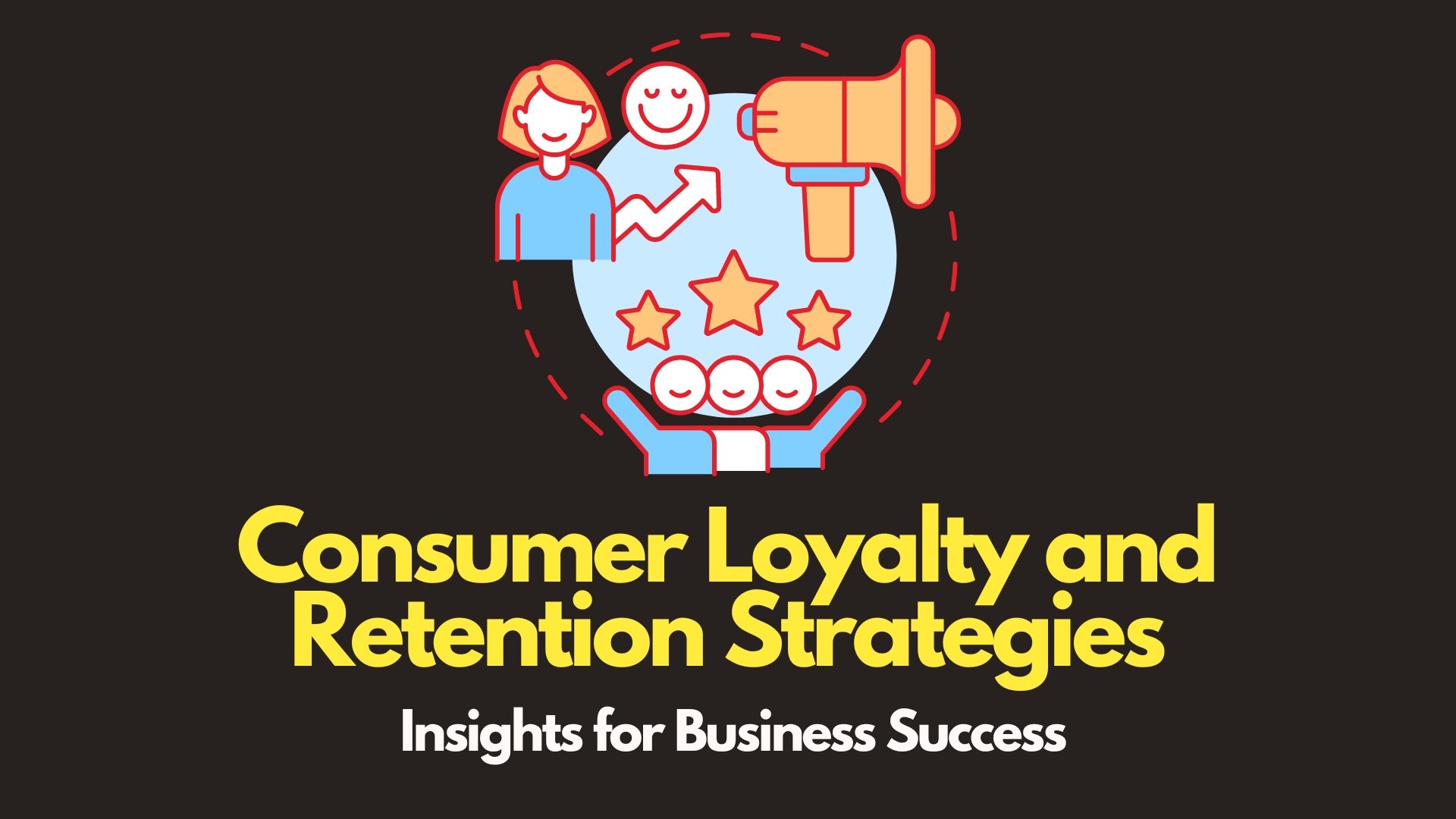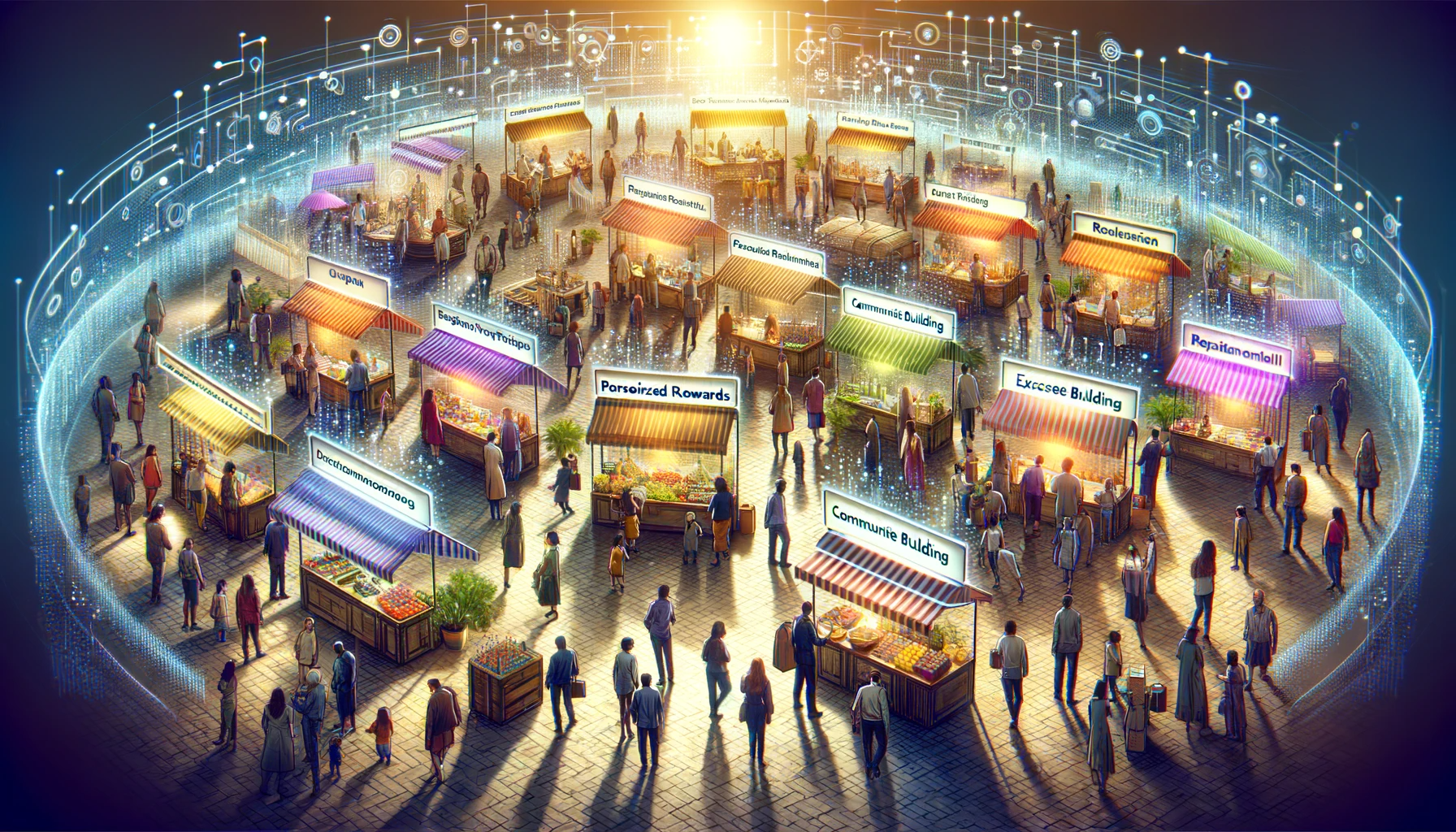Published
- 9 min read
Consumer Loyalty and Retention Strategies

| Key Takeaways |
|---|
| 1. Understand the psychological landscape of consumer loyalty. |
| 2. Implement strategies that align with consumer behavior and emotional triggers. |
| 3. Leverage loyalty programs effectively to enhance customer engagement. |
| 4. Apply gamification and E-CRM systems to maintain consumer loyalty. |
| 5. Recognize the role of trust, satisfaction, and consumer empowerment in retention. |
The Psychology of Consumer Loyalty
Consumer loyalty is not merely about repeat business; it’s about creating a bond with your customers that is difficult to break. Understanding the psychological underpinnings of why consumers stay loyal to a brand is paramount for businesses aiming to thrive in today’s competitive landscape. Let’s explore strategies that are rooted in psychological insights to build and maintain a loyal customer base.
Emotional Engagement and Brand Loyalty
The relationship between a brand and its customers is akin to a personal relationship, where emotions play a pivotal role. Establishing an emotional connection can lead to a strong sense of brand loyalty. One way to foster this connection is through personalized experiences that resonate with the customer’s identity and values. For example, a brand that champions sustainability can appeal to environmentally conscious consumers, weaving their beliefs into the brand narrative as seen in “Weaving Sustainability into Fashion’s Future”.
Rewarding Loyalty: Beyond the Points
Loyalty programs have evolved from mere point-collection systems to sophisticated engagement tools. The key lies in creating a sense of progress and achievement. When customers feel they are working towards a valuable reward, they are more likely to engage with the loyalty program, as discussed in the literature on “Loyalty programs, loyalty engagement and customer engagement with the company brand”. By leveraging LP engagement behavior, businesses can improve brand loyalty and customer engagement.

Gamification: The Fun Path to Loyalty
Introducing game-like elements into loyalty programs can make the process of earning rewards exciting and addictive. Gamification taps into the human love for challenges and achievement. When done right, it can significantly enhance the effectiveness of loyalty programs, as highlighted in the paper on “Play, games and gamification: possibilities for customer loyalty”.
E-CRM Systems: The Digital Touchpoint
In the age of digitalization, E-CRM systems play a crucial role in maintaining consumer loyalty by providing a seamless and personalized customer experience. By analyzing customer data, businesses can tailor their marketing strategies to individual preferences, ensuring that the relationship between the company and consumers is nurtured effectively, as seen in the insights from “The Analysis and Design of E-CRM Information Systems to Maintain Consumer Loyalty”.
Trust and Consumer Innovativeness
Trust is the cornerstone of any lasting relationship, including the one between a brand and its customers. Building trust through consistent quality, excellent customer service, and ethical business practices can lead to increased loyalty. Moreover, catering to the consumer’s desire for innovation can further cement this loyalty, as discussed in the paper on “Medi̇ator role of consumer trust in the effect of consumer innovati̇on on consumer loyalty”.
Conclusion
Consumer loyalty and retention strategies are multifaceted, requiring a deep understanding of psychological triggers and consumer behavior. By applying these insights, businesses can create a loyal customer base that not only contributes to sustained revenue but also becomes brand advocates. To visualize the impact of these strategies, imagine a campaign that combines personalized rewards, gamification, and trust-building measures, resulting in a vibrant community of loyal customers.

Understanding Consumer Behavior: The Key to Retention
To retain customers, businesses must delve into the complexities of consumer behavior. Every purchase decision carries an emotional weight, and understanding these emotions can lead to more effective retention strategies. Here are some psychological insights to consider:
The Role of Emotions in Purchasing Decisions
Emotions significantly influence consumer behavior. Positive feelings towards a brand can lead to repeat purchases, while negative experiences can drive customers away. The role of emotions is so crucial that it’s been the subject of extensive research, including studies like “Role of emotions in purchasing decisions”, which examine how emotional connections impact consumer choices.
Consumer Psychology and Pricing Strategies
Psychology plays a vital role in how consumers perceive pricing. Strategies that create a perception of value, such as anchoring prices or offering discounts, can enhance loyalty. For more on this, check out the insights from “Understanding psychology of pricing to leverage consumer perceptions”.
The Impact of Cultural Factors on Consumer Behavior
Cultural background influences consumer preferences and loyalty. Businesses need to be culturally sensitive and tailor their offerings to meet the diverse needs of their consumer base. The paper on “Impact of cultural factors on consumer behavior” offers valuable insights into how cultural nuances can affect purchasing decisions and loyalty.
The Power of Social Proof in Consumer Retention
Social proof, such as reviews and testimonials, can reinforce a consumer’s decision to stay loyal to a brand. Knowing that others have had positive experiences can be a powerful motivator for customers to continue their relationship with a brand. For more on the influence of social media and peer opinions, refer to “Social media and consumer influence”.
Leveraging Technology for Consumer Loyalty
Technology, particularly in the form of mindfulness and wellness apps, can play a role in consumer loyalty. Brands that integrate technology to enhance the customer experience can foster loyalty. A closer look at the intersection of technology and mindfulness is available in the post “Intersection of technology and mindfulness”.
Crafting a Balanced Marketing Strategy
A balanced marketing strategy that leverages consumer psychology can be the difference between a one-time purchase and a lifelong customer. Here are some key components to consider:
The Color of Success
Colors evoke emotions and can be used strategically in marketing to influence consumer behavior. Understanding the psychology behind color choices can help brands stand out and resonate with their target audience. Dive deeper into this topic with “Impact of color psychology in marketing and consumer perception”.
The Hidden Psychology Behind Brand Loyalty
Brand loyalty isn’t just about the quality of products or services; it’s about the psychological connection consumers have with the brand. Unravel the secrets behind this with insights from “Hidden psychology behind brand loyalty: Win hearts and wallets”.
Practical Examples for Immediate Application
To bring these strategies to life, businesses can look at practical examples and ready-to-use samples of marketing strategies that have successfully harnessed consumer psychology. The “Ultimate guide to crafting a marketing strategy” provides such examples for businesses to emulate (Ultimate guide to crafting a marketing strategy: Practical examples & ready-to-use samples).
Conclusion
Consumer loyalty and retention are complex areas that require a nuanced understanding of psychological factors and consumer behavior. By integrating these insights into a comprehensive marketing strategy, businesses can create a robust framework for customer loyalty. Visualize a brand that perfectly aligns its values with its customers, using color, technology, and social proof to create a cohesive and compelling narrative that keeps consumers coming back for more.

Maximizing Customer Retention with Targeted Strategies
Retaining a customer is often more cost-effective than acquiring a new one. By implementing targeted retention strategies that consider psychological insights, businesses can maximize their retention efforts. Let’s delve into some key strategies that can help secure consumer loyalty for the long haul.
Personalization: The Heart of Retention
Personalization is a powerful tool in the realm of consumer retention. When customers feel that a brand understands their unique needs and preferences, they are more likely to remain loyal. Personalized marketing messages, product recommendations, and customer service can all contribute to a feeling of being valued. For a deeper understanding of personalization strategies, visit “Understanding Consumer Behavior: Role of Age & Gender in Retail Purchasing”.
The Importance of Customer Experience
A positive customer experience is essential for retention. Every touchpoint, from the initial purchase to post-sale support, should be designed to leave a positive impression. Brands that excel in delivering an exceptional customer experience often enjoy higher retention rates. Insights into creating a memorable customer experience can be found in “Exploring Consumer Behavior: Online vs. Offline Shopping Dynamics”.
The Role of Neuroplasticity in Consumer Habits
Understanding how habits form and change can be crucial for customer retention. Neuroplasticity, the brain’s ability to reorganize itself by forming new neural connections, plays a significant role in this process. By creating positive brand-related habits, companies can foster loyalty. Learn more about the power of neuroplasticity in “Rewiring the Human Brain: The Power of Neuroplasticity”.
Analyzing Consumer Behavior for Better Retention
Consumer behavior analysis is key to understanding what drives loyalty and retention. By studying purchasing patterns, preferences, and feedback, businesses can tailor their retention strategies to be more effective. For a comprehensive look at consumer behavior analysis, check out “Unraveling the Secrets of Consumer Behavior Analysis”.
The Impact of Social Media on Teen Shopping Trends
The influence of social media on shopping trends, especially among teens, cannot be underestimated. Brands that actively engage with their audience on these platforms can boost retention by staying relevant and top-of-mind. To understand the impact of social media on consumer behavior, read “Impact of Social Media on Teen Shopping Trends”.
Conclusion
Developing effective consumer loyalty and retention strategies requires a blend of personalized engagement, exceptional customer experiences, understanding of consumer behavior, and leveraging technology and social media. By focusing on these areas, businesses can create a loyal customer base that not only sustains but also promotes brand growth. Picture a business that has mastered these strategies, enjoying a steady stream of repeat customers who not only prefer its products or services but also advocate for the brand within their social circles.